Quassia spmooneecreek
Quassia spmountnardi
Quintinia sieberi
Quintinia verdonii

Moonie Beach NSW
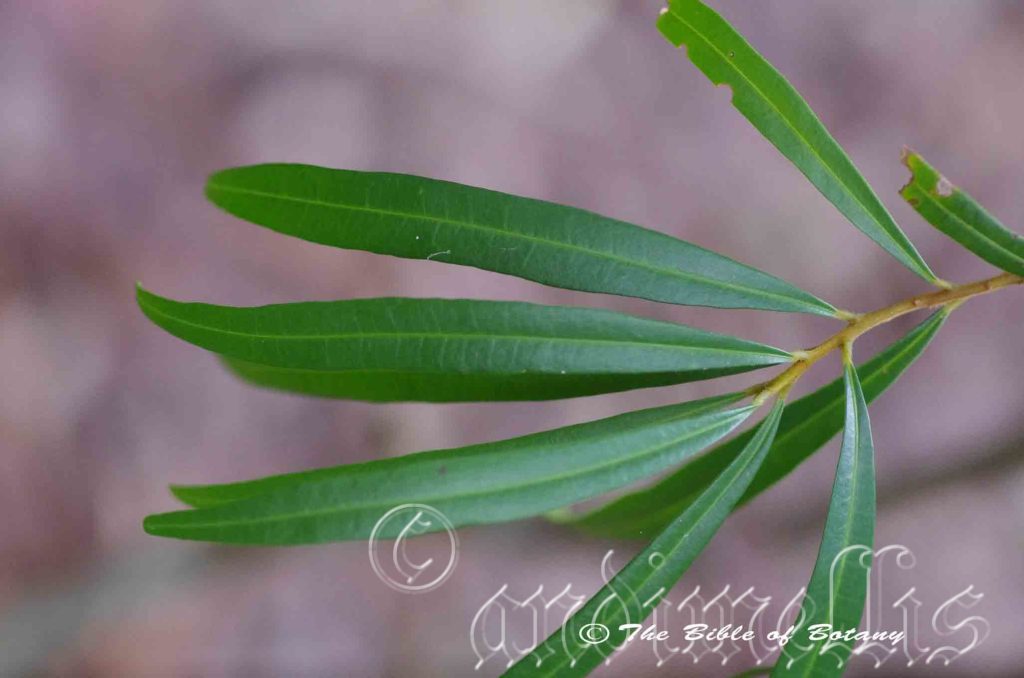
Moonie Beach NSW
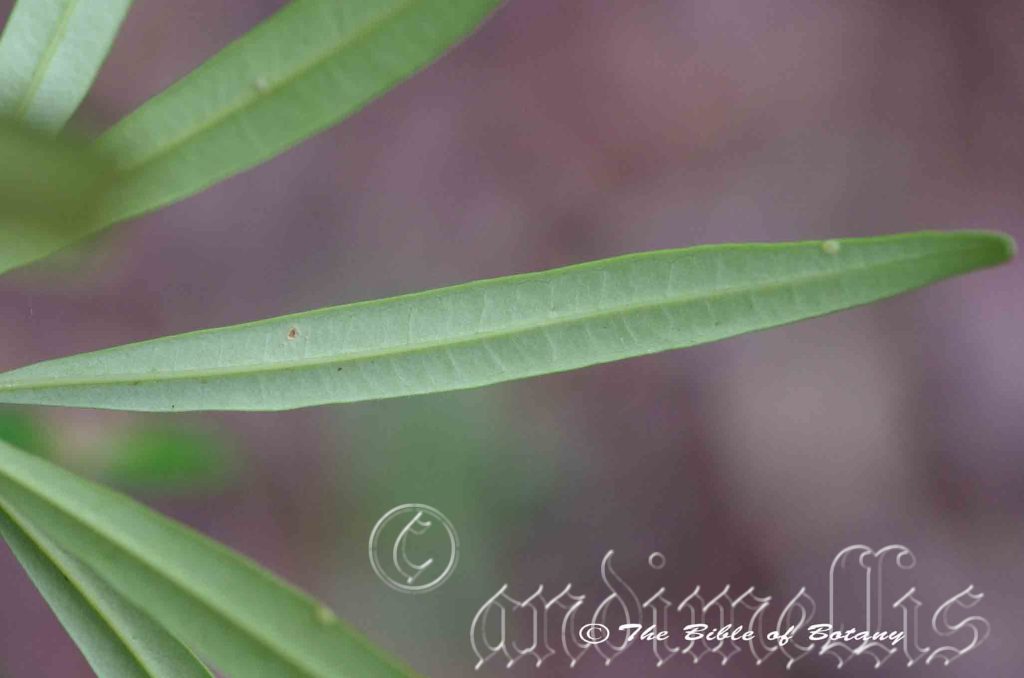
Moonie Beach NSW
Quassia spmooneecreek
Classification:
Unranked: Equisetopsida
Unranked: Magnoliidae
Order: Sapindales
Family: Simaroubaceae
Subfamily: Chrysophylloideae
Genus: Is named in honour of Quasia, who was a Dutch slave who discovered the medicinal properties of the plant’s bark to produce quassin for the use against roundworms. Quassin is 50 times more bitter than Quinine and is used in soft drinks and other foods to give a bitter taste.
Specie: From Moonee Creek which is Latinized for the area that it is found in. It refers to plants, which were first discovered along Moonee Creek and are still awaiting a specie name.
Sub specie:
Common Name:
Distribution:
Quassia sp. moonee creek is restricted to 2 small populations along Moonee Creek between Coffs Harbour and Woolgoolga and Timbertop south of Glenreagh in north eastern New South Wales.
https://avh.ala.org.au/occurrences/search?taxa=Quassia+sp.+Moonee+Creek
Habitat Aspect Climate:
Quassia sp. moonee creek prefers dappled shade to full sun. It grows in openings warm rainforests on steeper slopes and flats. Its altitude ranges from 5 meters ASL to 20 meters ASL and 300 meters ASL to 450 meters ASL.
The temperatures range from minus 1 degree in July to 36 degrees in January.
The rainfall ranges from lows of 1000mm to 1600mm average per annum.
Soil Requirements:
Quassia sp. moonee creek prefers medium clays with a high proportion of rainforest leaf litter. The soils are usually derived from decomposed black basalts. The soils pH ranges from 5.5pH to 6.5pH. It does not tolerate water logged soils. Non saline soils to moderately saline soils are tolerated.
Height & Spread:
Wild Plants: 1.5m to 2m by 1.5m to 2.5m.
Characteristics:
Quassia sp. moonee creek grows as a medium shrub with fawn to fawnish-brown stem. The stems are densely covered in soft, fawn pubescent hairs. The new growth is deep maroon-red turning olive-brown prior to its mature colour.
The sub opposite, opposite or alternate, narrow oblanceolate to very narrow elliptical leaves measure 45mm to 90mm in length by 6mm to 13mm in width. The petioles are moderately to densely covered in soft, fawn pubescent hairs and measures 2.5mm to 5mm in length. The bases are attenuate while the apexes are acute to acute to acute obtuse. The discolourous laminas are deep grass-green to deep green, semi glossy and glabrous on the upper laminas while the lower laminas are slightly paler and glabrous or slightly covered in soft, fawn pubescent hairs. The laminas recurve upwards from the mid vein to the margins and decurve slightly downwards near the apex. The leaf margins are entire. The mid vein is prominent on the lower lamina and is visible on the upper lamina while the regularly arranged lateral veins are finely prominent on the lower lamina.
Inflorescences of Quassia sp. moonee creek are born clusters of 1 to 4 from the leaf axils to ramiflorously on the leafless stems. The pedicels are moderately covered in soft, fawn pubescent hairs and measure 1mm to 12mm in length. The 5 or at times 4 acute calyx lobes are moderately covered in soft, fawn pubescent hairs and measure 0.8mm to 1.4mm in length while the calyx tubes measure 0.4mm to 0.6mm in length. The 4 or 5 red petals are glabrous to sparsely covered in soft, fawn pubescent hairs and measure 3.5 to 4mm in length.
The 10 or at times 8 exserted filaments are free for their entire length and are densely covered in fawn villous hairs on the outer surface. The white filaments measure 1.5mm to 3mm in length. The anthers are white.
The white styles are free and glabrous while the 5 or at times 4 carpel ovaries are densely covered in fawn villous hairs. The pistils measure 1mm to 1.5mm in length. Quassia sp. moonee creek flowers appear from early September to November.
The fruits of Quassia sp. moonee creek consist of 1 to 5 ovoid drupes on a single pedicel. The drupes are glabrous and measure 5mm to 10mm in length by 4mm to 8mm in diameter. The green drupes turn orange-yellow, scarlet red or deep purple-red when ripe. The ripe fruits have not been seen by the author.
Confusing Genre:
Quassia sp. moonee creek’s leaves measure 45mm to 90mm in length by 4mm to 8mm in width.
Quassia sp. mount nardi’s leaves measure 75mm to 160mm in length by 15mm to 30mm in width.
Wildlife:
Quassia sp. moonee creek’s wildlife is unknown to the author.
Cultivation:
Quassia sp. moonee creek is a small tree that should be grown in association with other dry rainforest specie. It is ideal at the edge of a rain forest or in moist Eucalyptus forests especially in galleries. In cultivation it grows from 4 meters to 5 meters in height by 3 meters to 4 meters in diameter when grown in the open.
It grows exceptionally well on lighter soils where deep leaf litter keeps the soil cool and moisture at an even level. If these requirements are met it can cope with temperatures as low as minus 3 degrees and up to 36 degrees. It is moderately drought resistant and is slow growing in the early stages of development.
Add to the above, if it is given an adequate supply of water and a little native fertilizer on a regular basis the plants should respond with good flowering and fruit over a longer period.
It often reaches its full potential in just 12 to 15 years and flower from the seventh or eighth year from seed.
This tree could be used as a bonsai plant as the branches are often twisted and gnarled in their natural habitat.
Propagation:
Seeds: The seeds of Quassia sp. moonee creek can be removed easily from the fruits.
Sow fresh seeds directly into a seed raising mix, keeping them moist not wet. Do not over water as the seeds will rot off before germination takes place. Place the trays in a warm sunny area or shaded area with 50mm shade cloth on the bush house. When the seedlings are 20 to 25 mm tall, prick them out and plant them into 50mm native tubes using a good organic mix.
As the seedlings roots reach the bottom of the tubes plant them out into their permanent position. Do not delay.
Fertilize using seaweed, fish emulsion or organic chicken pellets soaked in water on an alternate basis as a foliar spray. Fertilize every two months until the plants are established then twice annually in early September and March to maintain better colour, health, vitality and flowering.
Further Comments from Readers:
All information is included in good faith and has been thoroughly researched prior to printing. The website or the author does not warrant or guarantee the accuracy of any information on these pages, nor does the website or the author accept any responsibility for any loss arising from the use of the information found within. The views and opinions are strictly those of the author or those members who chose to actively participate in the contents herein.
“Hi reader, it seems you use The Bible of Botany a lot. That’s great as we have great pleasure in bringing it to you! It’s a little awkward for us to ask, but our first aim is to purchase land approximately 1,600 hectares to link several parcels of N.P. into one at The Pinnacles NSW Australia, but we need your help. We’re not salespeople. We’re amateur botanists who have dedicated over 30 years to saving the environment in a practical way. We depend on donations to reach our goal. If you donate just $5, the price of your coffee this Sunday, We can help to keep the planet alive in a real way and continue to bring you regular updates and features on Australian plants all in one Botanical Bible. Any support is greatly appreciated. Thank you.”
In the spirit of reconciliation we acknowledge the Bundjalung, Gumbaynggirr and Yaegl and all aboriginal nations throughout Australia and their connections to land, sea and community. We pay our respect to their Elders past, present and future for the pleasures we have gained.
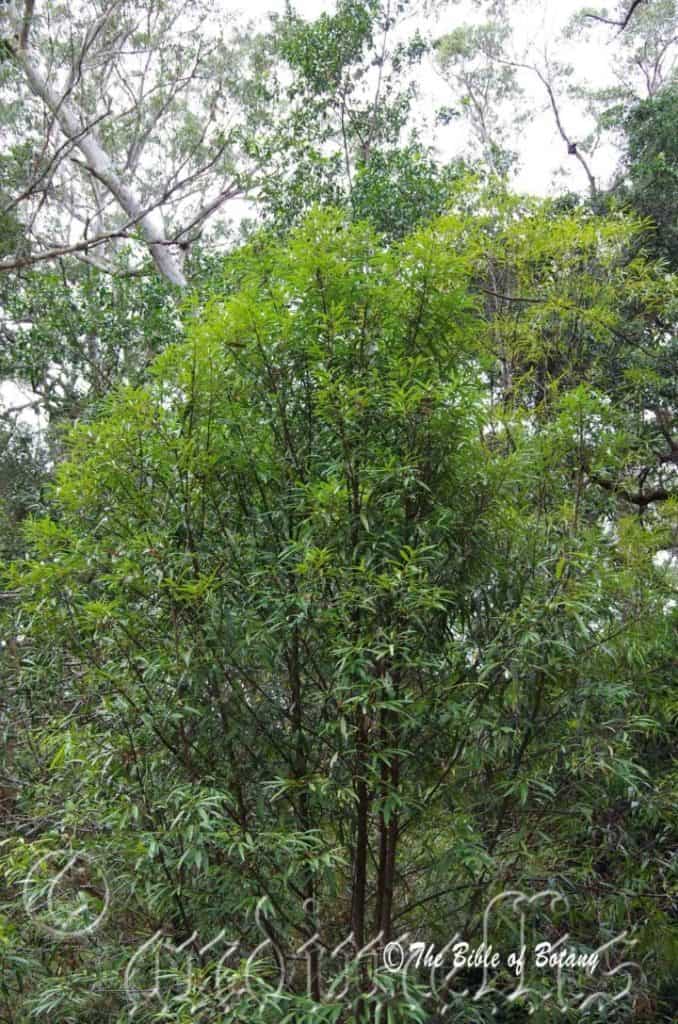
Mount Nardie NSW

Mount Nardie NSW
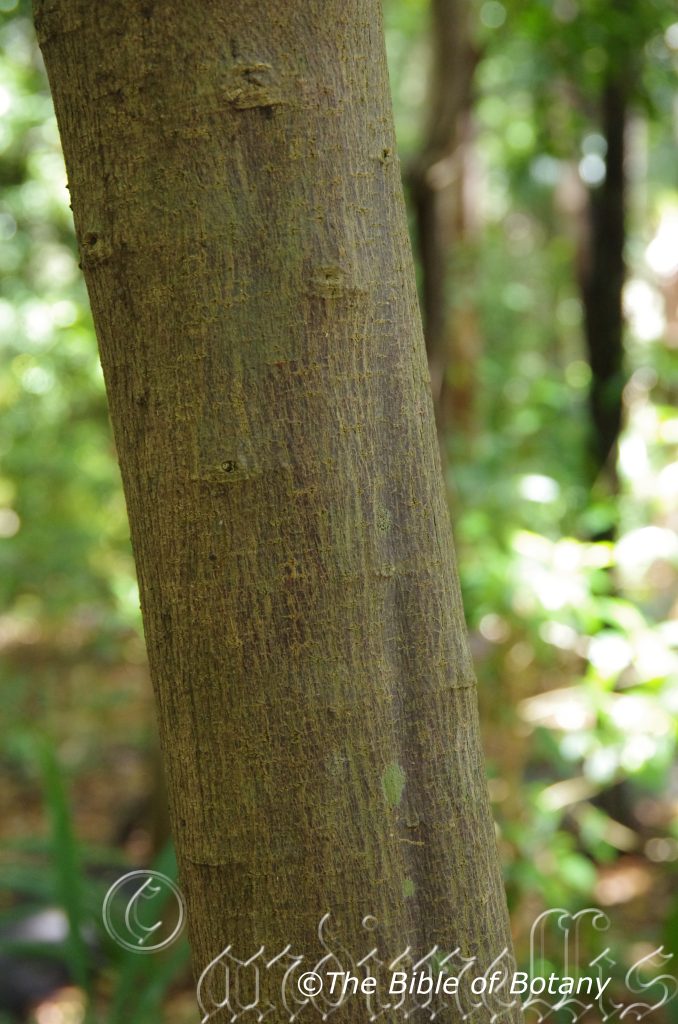
Mount Nardie NSW
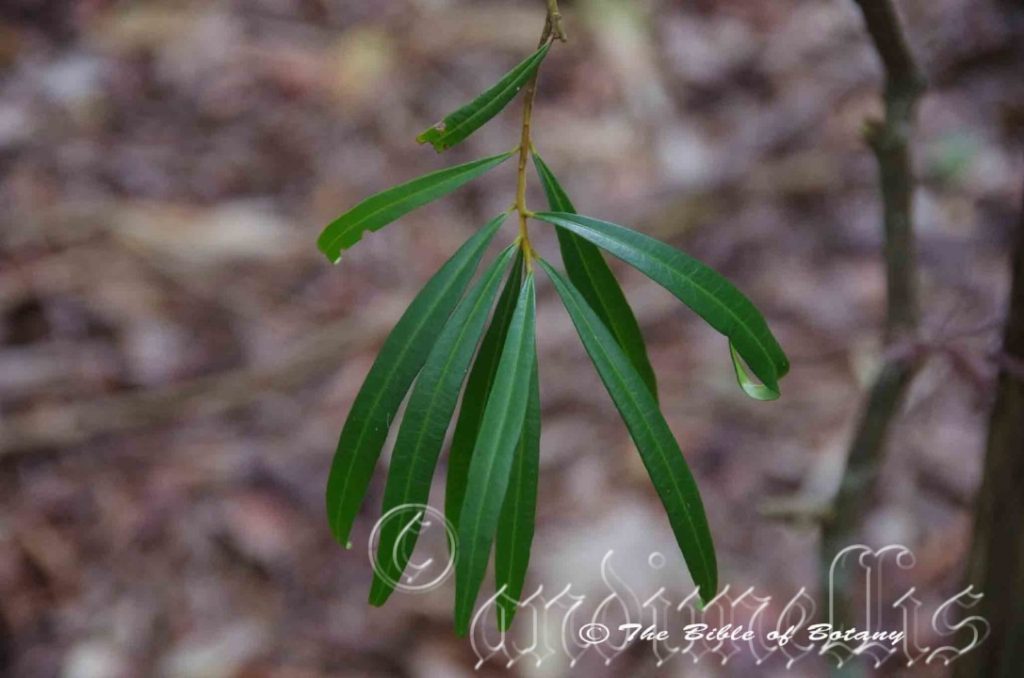
Mount Nardie NSW
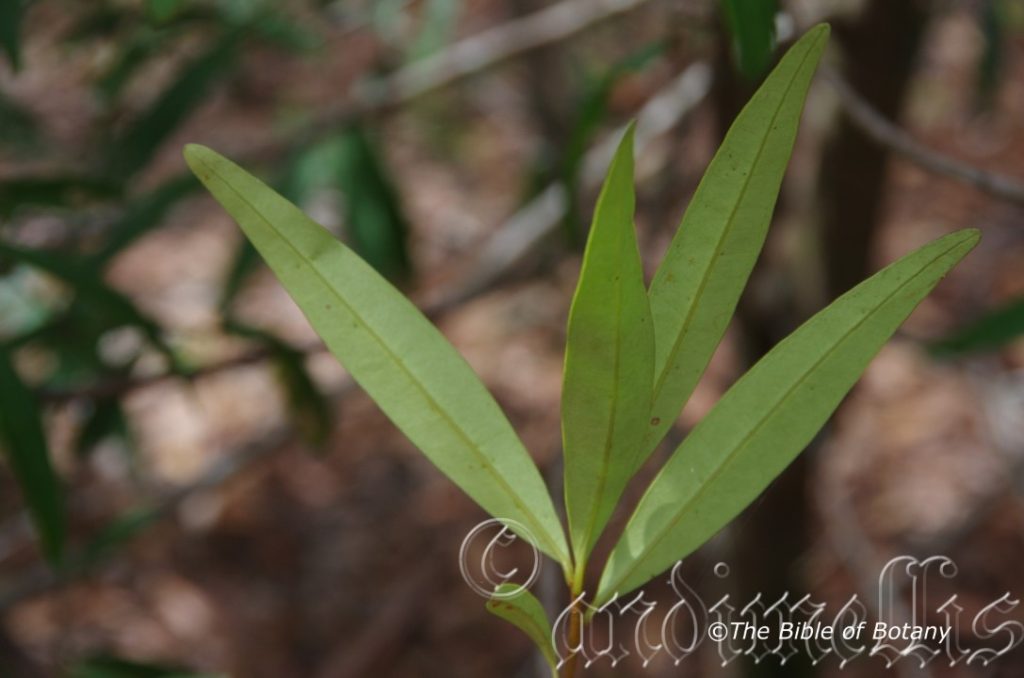
Mount Nardie NSW
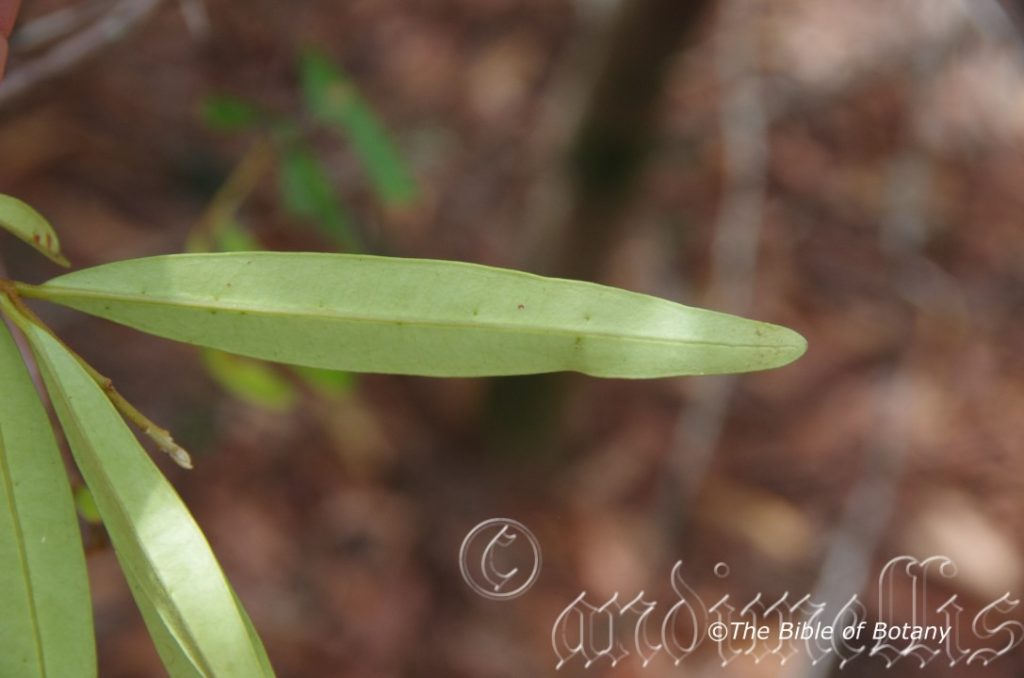
Mount Nardie NSW
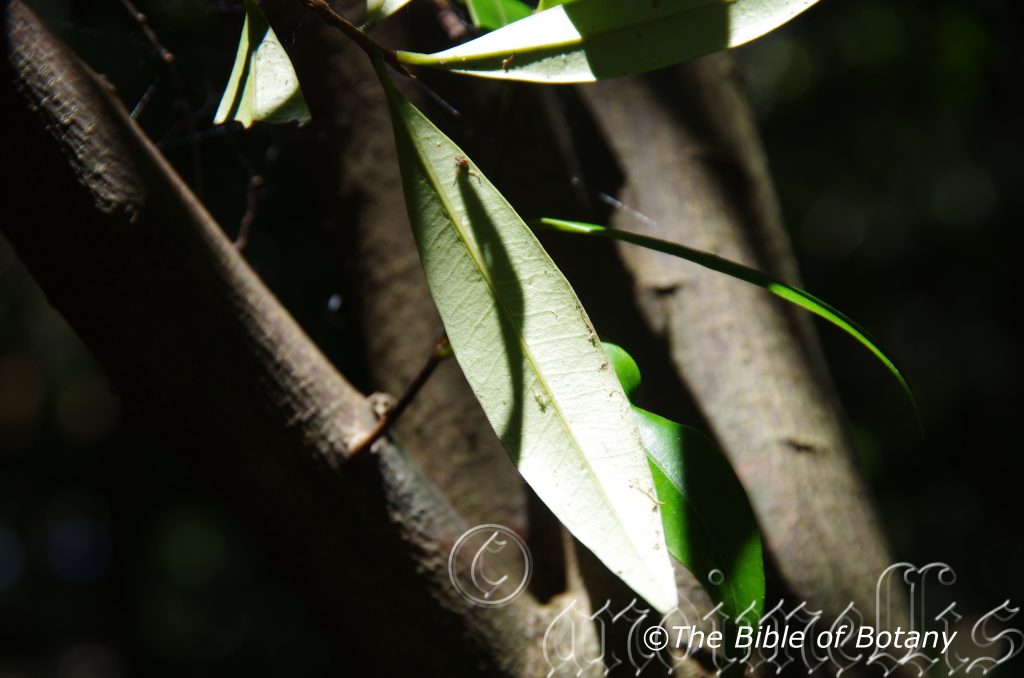
Mount Nardie NSW

Mount Nardie NSW

Mount Nardie NSW
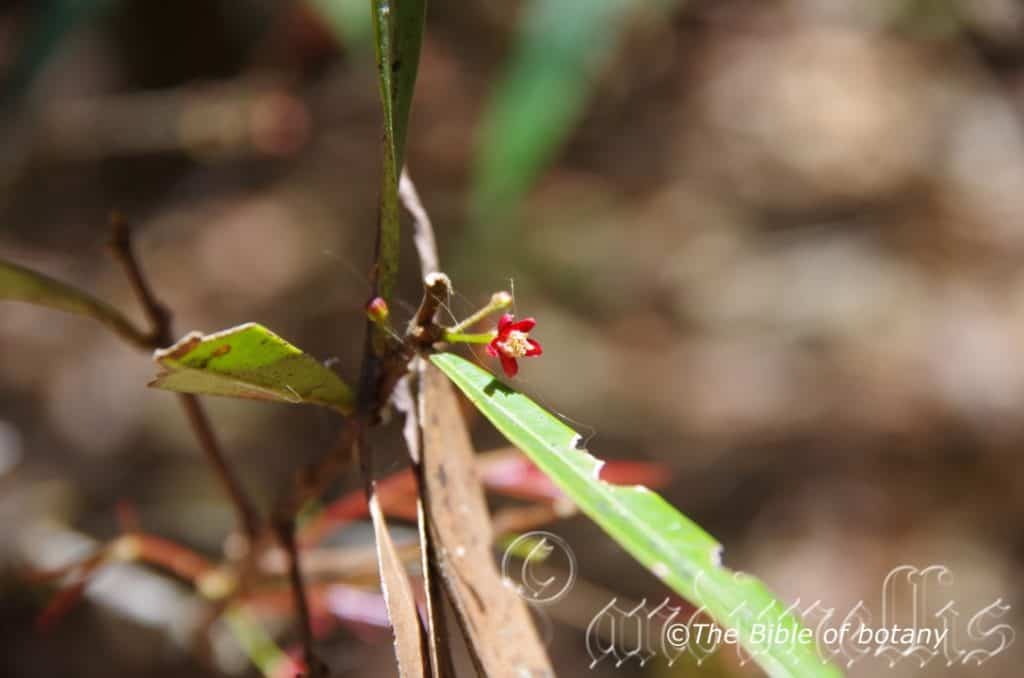
Mount Nardie NSW
Quassia spmountnardi
Classification:
Unranked: Eudicots
Unranked: Rosdids
Order: Sapindales
Family: Simaroubaceae
Subfamily: Chrysophylloideae
Genus: Is named in honour of Quasia, who was a Dutch slave who discovered the medicinal properties of the plant’s bark to produce quassin for the use against roundworms. Quassin is 50 times more bitter than Quinine and is used in soft drinks and other foods to give a bitter taste.
Specie: From Mount Nardi which is Latinized for the area that it is found in. It refers to plants, which were first discovered along Mount Nardi and are still awaiting a specie name.
Sub specie:
Common Name:
Distribution:
Quassia sp. mount nardi is found east of the Great Dividing Range from near Alstonville, the Nightcap Range and between Dorrigo and Lowanna.
Habitat Aspect Climate:
Quassia sp. mount nardi prefers dappled shade to full sun. It grows in openings warm well developed rainforests on steeper slopes. Its altitude ranges from 500 meters ASL to 750 meters ASL.
The temperatures range from minus 3 degrees in July to 36 degrees in January.
The rainfall ranges from lows of 1000mm to 1900mm average per annum.
Soil Requirements:
Quassia sp. mount nardi prefers medium clays with a high proportion of rainforest leaf litter. The soils are usually derived from decomposed black basalts. The soils pH ranges from 5.5pH to 6.5pH. It does not tolerate water logged soils. Non saline soils to moderately saline soils are tolerated.
Height & Spread:
Wild Plants: 3m to 5m by 3m to 4m
Characteristics:
Quassia sp. mount nardi grows as a small tree with deep grey-black to black bark with longitudinal furrows and some tessellation between the furrows. The curled or twisted branches and branchlets are similar to the trunk. The new growth is olive brown to olive green, glabrous.
The alternate, crowded narrow elliptical to narrow lanceolate leaves measure 70mm to 160mm in length by 15mm to 30mm in width. The petioles measures 3mm to 5mm in length. The bases are tapering while the apexes are narrowly acute to acute or acute with an obtuse tip. The discolourous laminas are grass-green to deep green, semi glossy and glabrous on the upper lamina while the lower lamina is paler and yellow-green. The laminas curve slightly downwards from the base to the apex. The leaf margins are entire, flat and slightly undulating. The mid vein is prominent on the lower lamina and is visible on the upper lamina.
Inflorescences of Quassia sp. mount nardi are born clusters of 1 to 4 from the leaf axils, ramiflorously or from short leafless inflorescences. The pale green pedicels are glabrous and measure 6mm to 10mm in length. The 5 pale orange, obtuse calyx lobes are glabrous and measure 0.2mm to 0.4mm in length while the calyx tubes measure 0.4mm to 0.6mm in length. The 5 orange-red to scarlet red petals are ovate and measure 4mm to 5mm in length by 3.5mm to 4mm in width. The petals are glabrous.
The 8 or 10 exserted filaments are free for their entire length and are densely covered in fawn villous hairs below the constriction. The white filaments measure 5mm to 5.5mm in length. The anthers are white.
The 5 white styles are free and glabrous while the ovary is also glabrous. The pistils measure 1mm to 1.2mm in length. Quassia sp. mount nardi’s flowers appear from early September to November.
The fruits of Quassia sp. mount nardi consist of 1 to 3 ovoid drupes on a single pedicel. The drupes are glabrous and measure 9mm to 12mm in length by 4mm to 7.5mm in diameter. The green drupes turn orange-yellow, scarlet red or deep purple-red when ripe. The 3 to 5 glossy brown seeds are flattened ellipsoidal and woody. The fruits ripen from September to November.
Confusing Genre:
Quassia sp. mount nardi’s leaves measure 75mm to 160mm in length by 15mm to 30mm in width.
Quassia sp. moonee creek’s leaves measure 45mm to 90mm in length by 4mm to 7.5mm in width.
Wildlife:
Quassia sp. mount nardi’s wildlife is unknown to the author.
Cultivation:
Quassia sp. mount nardi is a small tree that should be grown in association with other dry rainforest specie. It is ideal at the edge of a rain forest or in moist Eucalyptus forests especially in galleries. In cultivation it grows from 4 meters to 5 meters in height by 3 meters to 4 meters in diameter when grown in the open.
It grows exceptionally well on lighter soils where deep leaf litter keeps the soil cool and moisture at an even level. If these requirements are met it can cope with temperatures as low as minus 3 degrees and up to 36 degrees. It is moderately drought resistant and is slow growing in the early stages of development.
Add to the above, if it is given an adequate supply of water and a little native fertilizer on a regular basis the plants should respond with good flowering and fruit over a longer period.
It often reaches its full potential in just 12 to 15 years and flower from the seventh or eighth year from seed.
This tree could be used as a bonsai plant as the branches are often twisted and gnarled in their natural habitat.
Propagation:
Seeds: The seeds of Quassia sp. mount nardi can be removed easily from the fruits.
Sow fresh seeds directly into a seed raising mix, keeping them moist not wet. Do not over water as the seeds will rot off before germination takes place. Place the trays in a warm sunny area or shaded area with 50mm shade cloth on the bush house. When the seedlings are 20 to 25 mm tall, prick them out and plant them into 50mm native tubes using a good organic mix.
As the seedlings roots reach the bottom of the tubes plant them out into their permanent position. Do not delay.
Fertilize using seaweed, fish emulsion or organic chicken pellets soaked in water on an alternate basis as a foliar spray. Fertilize every two months until the plants are established then twice annually in early September and March to maintain better colour, health, vitality and flowering.
Further Comments from Readers:
All information is included in good faith and has been thoroughly researched prior to printing. The website or the author does not warrant or guarantee the accuracy of any information on these pages, nor does the website or the author accept any responsibility for any loss arising from the use of the information found within. The views and opinions are strictly those of the author or those members who chose to actively participate in the contents herein.
“Hi reader, it seems you use The Bible of Botany a lot. That’s great as we have great pleasure in bringing it to you! It’s a little awkward for us to ask, but our first aim is to purchase land approximately 1,600 hectares to link several parcels of N.P. into one at The Pinnacles NSW Australia, but we need your help. We’re not salespeople. We’re amateur botanists who have dedicated over 30 years to saving the environment in a practical way. We depend on donations to reach our goal. If you donate just $5, the price of your coffee this Sunday, We can help to keep the planet alive in a real way and continue to bring you regular updates and features on Australian plants all in one Botanical Bible. Any support is greatly appreciated. Thank you.”
In the spirit of reconciliation we acknowledge the Bundjalung, Gumbaynggirr and Yaegl and all aboriginal nations throughout Australia and their connections to land, sea and community. We pay our respect to their Elders past, present and future for the pleasures we have gained.
Quintinia sieberi
Classification:
Class: Equisetopsida
Subclass: Magnoliidae
Superorder: Asteranae
Order: Paracryphiales
Family: Paracryphiaceae
Genus: Is named in honour of Jean Baptiste de la Quintinie; 1626-1688, who was a French Horticulturalist.
Specie: Is named in honour of Franz Wilhelm Sieber; 1789-1844, who was a Prague botanist who travelled around the world collecting plants, which included venturing into New South Wales in 1823.
Sub specie:
Common Name: Possum Wood or Brown Possum Wood or Pink Cork Wood or Pink Wood.
Distribution:
Quintinia sieberi is found south from Brunswick Heads in far north eastern New South Wales to Braidwood in south eastern New South Wales.
It is also found in several disjunct populations in southern Victoria at Kyabram, Moggs Creek, Sandringham and Inverlock. It is found further west at Nangkita in South Australia and south at Binalong Bay in Tasmania.
In the north it is found on the eastern coastal ranges then on the range in the southern part of its New South Wales distribution and then mainly along the coast in Victoria , South Australia and Tasmania.
https://avh.ala.org.au/occurrences/search?taxa=Quintinia+sieberi#tab_mapView
Habitat Aspect Climate:
Quintinia sieberi prefers dappled shade to full sun. It grows in cool temperate rainforests, warm temperate rainforest or moist coastal rainforests on slopes and hills. Its altitude ranges from 120 meters ASL to 1150 meters ASL.
The temperatures range from minus 3 degrees in July to 36 degrees in January.
The rainfall ranges from lows of 650mm to 1720mm average per annum.
Soil Requirements:
Quintinia sieberi prefers soils that are sandy loams to light fatty clays with a high proportion of forest litter. The soils are derived from decomposed sandstones, granites or gritty shales. The soils pH ranges from 5pH to 6pH. It does not tolerate water logged soils. Non saline soils to moderately saline soils are tolerated.
Height & Spread:
Wild Plants: 20m to 25m by 8m to 10m.
Characteristics:
The trunk and stems of Quintinia sieberi are mid grey to mid reddish-brown, scabrous and scaly. The young stems are reddish-maroon with reddish surface glands.
The alternate elliptic to oblong-elliptic leaves of Quintinia sieberi measure 50mm to 120mm in length by 15mm to 50mm in width. The thick olive-green petioles often have a reddish tinge especially when new and measures 8mm to 12mm in length. The bases are broad cuneate while the apexes are shortly acuminate. The discolourous coriaceous laminas are olive-green to deep green or sea-green, semi glossy to glossy and glabrous on the upper lamina while the lower laminas are paler sparsely covered in reddish glands. The laminas recurve upwards from the mid vein to the margins and gently decurve downwards from the base to the apex or on the apical half. The margins are entire. The mid vein and lateral veins are prominent on the upper lamina and are clearly visible from the lower laminas.
Inflorescences of Quintinia sieberi are born as terminal panicles. The creamy peduncle, rachis and pedicels are glabrous and measure 80mm to 160mm in length. The pedicels measure 1mm to 1.5mm in length. The cream calyxes and 5 lobes are glabrous and measure 0.5mm to 1mm in length while the minute, erect calyx lobes are obtuse. The 5 white, divaricate, oblong petals have a prominent midrib on the lower surface and are obtuse. The petals measure 2.5mm to 4mm in length by 1.2mm to 2mm in width.
The 5 stout, white filaments are glabrous and adjacent to the petals. The filaments measure 1.2mm to 2mm in length. The pale yellow anthers are adnately fixed around the margins of the filaments apex.
The white style arises from the center of a deep green disc. The pistils measure 1mm to 1.3mm in length while the 5 white stigmas are very short almost papillate looking. The flowers appear from October to November.
Quintinia sieberi fruits are globose capsules. The capsules are glabrous and measure 2mm to 3mm in length by 2mm to 3mm in diameter. The green capsules turn fawn when ripe.
Wildlife:
Quintinia sieberi’s wildlife is unknown to the author.
Cultivation:
Quintinia sieberi is a medium tree that should be grown in association with other dry rainforest specie. They are ideal at the edge of a rain forest or bush garden. In cultivation they will grow from 15 meters to 20 meters in height by 10 meters to 12 meters in diameter when grown in the open on fertile soils.
It grows exceptionally well on lighter soils where deep leaf litter keeps the soil cool and moisture at an even level. If these requirements are met it can cope with temperatures as low as minus 5 degrees and up to 36 degrees. They are moderately drought resistant. They are slow growing in the early stages of development.
The tree makes a good park like tree and is quite stunning when in flower. The trees make very good accent trees in front of low set commercial buildings, industrial sheds or low set school class rooms or either side of a driveway or entry front door. Here they will break up hard rigid architectural lines and give warmth and breadth to a building.
This tree could be used as a bonsai plant as the branches are often twisted and kinked in their natural habitat where it is growing in exposed skeletal sandy conditions.
Propagation:
Seeds: The seeds of Quintinia sieberi can be removed easily from the fruits. Sow fresh seeds directly into a seed raising mix, keeping them moist not wet. Do not over water as the seeds will rot off before germination takes place. Place the trays in a warm sunny area or shaded area with 50mm shade cloth on the bush house. When the seedlings are 20 to 25 mm tall, prick them out and plant them into 50mm native tubes using a good organic mix.
Fertilize using Seaweed, fish emulsion or organic chicken pellets soaked in water and apply the liquid on an alternate basis. Fertilize every two months.
As the seedlings roots reach the bottom of the tubes plant them out into their permanent position. Do not delay.
Further Comments from Readers:
All information is included in good faith and has been thoroughly researched prior to printing. The website or the author does not warrant or guarantee the accuracy of any information on these pages, nor does the website or the author accept any responsibility for any loss arising from the use of the information found within. The views and opinions are strictly those of the author or those members who chose to actively participate in the contents herein.
“Hi reader, it seems you use The Bible of Botany a lot. That’s great as we have great pleasure in bringing it to you! It’s a little awkward for us to ask, but our first aim is to purchase land approximately 1,600 hectares to link several parcels of N.P. into one at The Pinnacles NSW Australia, but we need your help. We’re not salespeople. We’re amateur botanists who have dedicated over 30 years to saving the environment in a practical way. We depend on donations to reach our goal. If you donate just $5, the price of your coffee this Sunday, We can help to keep the planet alive in a real way and continue to bring you regular updates and features on Australian plants all in one Botanical Bible. Any support is greatly appreciated. Thank you.”
In the spirit of reconciliation we acknowledge the Bundjalung, Gumbaynggirr and Yaegl and all aboriginal nations throughout Australia and their connections to land, sea and community. We pay our respect to their Elders past, present and future for the pleasures we have gained.
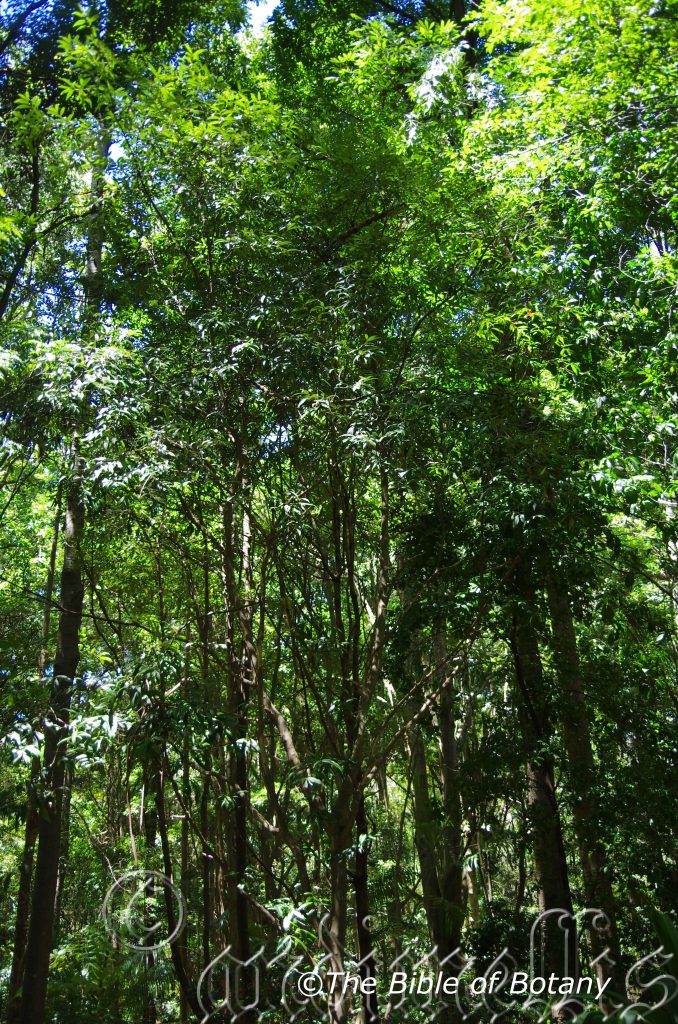
Washpool National Park NSW
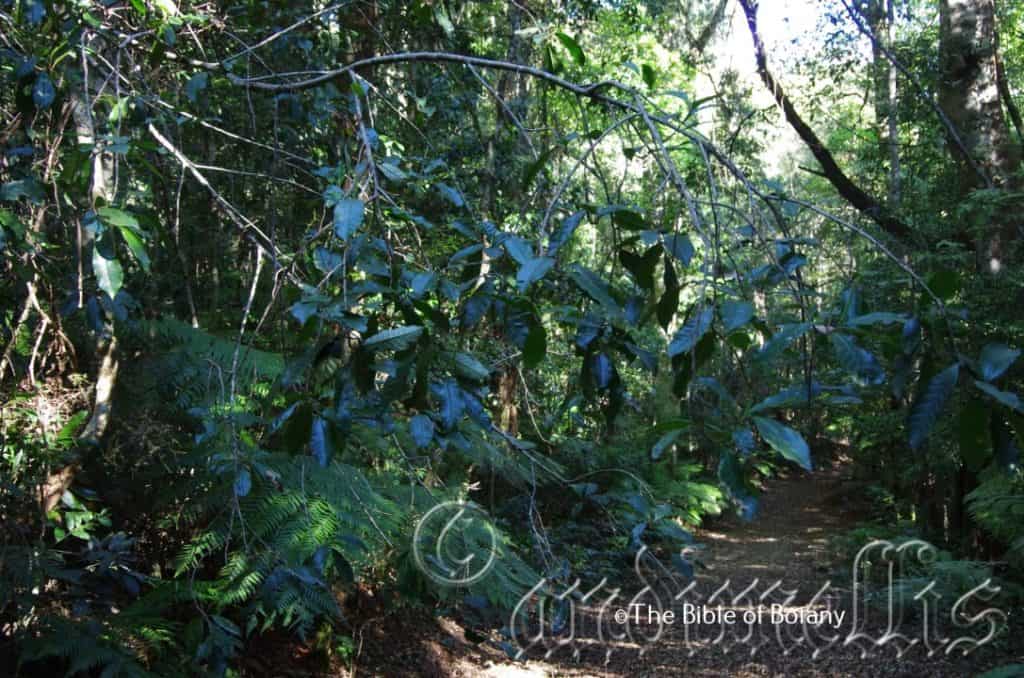
Washpool National Park NSW

Washpool National Park NSW

Washpool National Park NSW
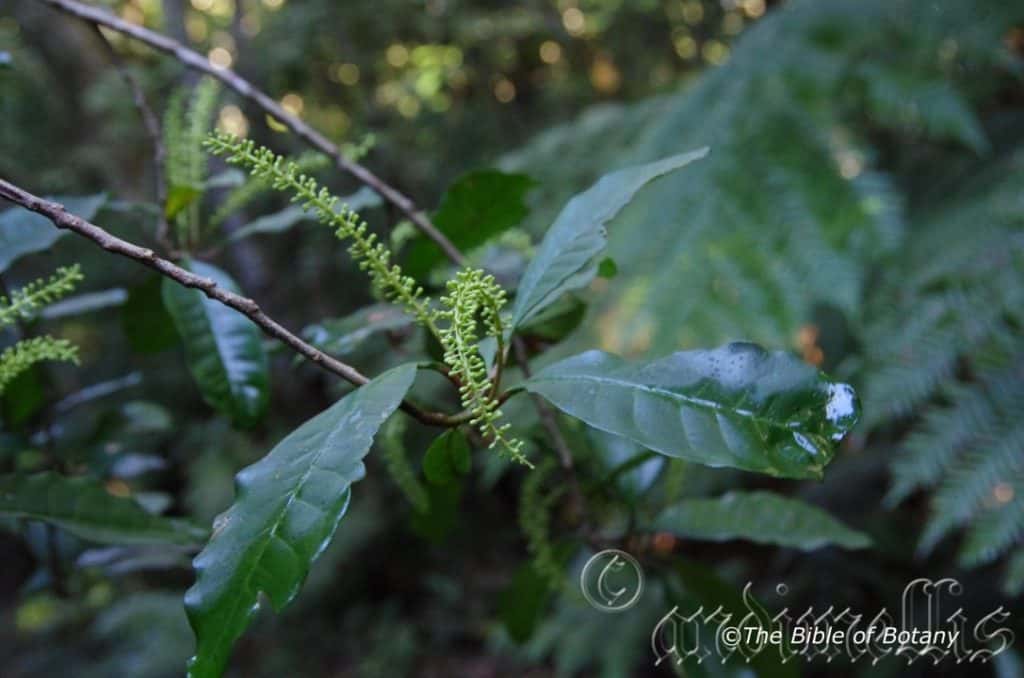
Washpool National Park NSW
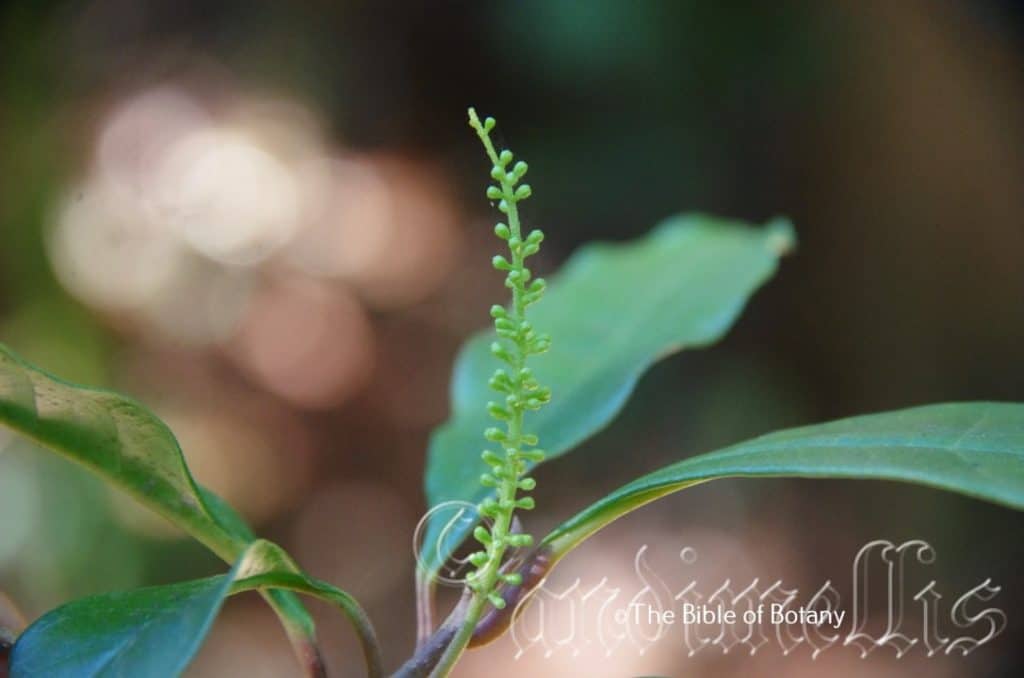
Washpool National Park NSW
Quintinia verdonii
Classification:
Class: Equisetopsida
Subclass: Magnoliidae
Superorder: Asteranae
Order: Paracryphiales
Family: Paracryphiaceae
Genus: Is named in honour of Jean Baptiste de la Quintinie; 1626-1688, who was a French Horticulturalist.
Specie: Is named in honour of Verdon; 1834-1896, who was a British born Australian who was a politician and patron of the sciences.
Sub specie:
Common Name: Grey Possum Wood or Smooth Possum Wood.
Distribution:
Quintinia verdonii is found south from Gympie in southern coastal Queensland to the Bowman River near Gloucester central coastal New South Wales. It is found on and east of the Great Dividing Range.
https://avh.ala.org.au/occurrences/search?taxa=Quintinia+verdonii#tab_mapView
Habitat Aspect Climate:
Quintinia verdonii prefers dappled shade to full sun. It grows in dry rainforests. Its altitude ranges from 200 meters ASL to 852 meters ASL.
The temperatures range from minus 2 degrees in July to 36 degrees in January.
The rainfall ranges from lows of 1050mm to 1720mm average per annum.
Soil Requirements:
Quintinia verdonii prefers soils that are light fatty clays to medium clays with a high proportion of forest litter. The soils are usually derived from decomposed black basalt. The soils pH ranges from 5pH to 6pH. It does not tolerate water logged soils. Non saline soils to moderately saline soils are tolerated.
Height & Spread:
Wild Plants: 12m to 18m by 8m to 10m.
Characteristics:
The trunk and larger stems of Quintinia verdonii are brownish to grey-brown, flaky and scaly. The new growth and juvenile foliage and stems are pink-green to greenish-pink and covered in pale pinkish-cream glands.
The alternate leaves of Quintinia verdonii are oblong-elliptic to oblong-obovate leaves measure 50mm to 160mm in length by 15mm to 50mm in width. The petioles are dull, creamy-pink to pinkish-red and measure 10mm to 25mm in length. The bases are cuneate while the apexes are shortly and bluntly acuminate to rounded. The coriaceous discolourous laminas are deep green to sea-green, semi glossy to glossy and glabrous on the upper laminas while the lower laminas are paler to slightly paler bluish-green and are covered in small colourless glands. The laminas are flat to recurve gently upwards and decurve downwards close to the apex. The laminas are slightly convex between the mid vein and the lateral veins. The margins are entire and undulating. The mid vein is strongly prominent as are the pinnate lateral veins which loop well inside the margins. The reticulated secondary veins are faintly visible.
The inflorescences of Quintinia verdonii are racemes born in the upper leaf axils. The pale green peduncle and rachis and white pedicels are glabrous. The peduncle and rachis measure 100mm to 150mm in length while the pedicels measure 3mm to 4mm in length. The elliptical, white calyx tubes are glabrous and measure 0.5mm to 1mm in length while the calyx’s lobes measure 1mm to 1.5mm in length. The 5 white petals are oblong and measure 2.5mm to 4mm in length by 0.5mm to 0.8mm in width. The petals are glabrous and become reflexed at anthesis.
The 5 white filaments are adjacent to the petals and measure 1.5mm to 1.9mm in length. The yellow, adnately fixed sagittate anthers measure 1mm to 1.3mm in length.
The white style arises from the center of a white disc. The pistils measure 1mm to 1.3mm in length while the numerous white stigmas are very short almost papillate looking. The flowers appear from September to November.
Quintinia verdonii fruits are globose capsules. The capsules are glabrous and measure 2mm to 3mm in length by 2mm to 3mm in diameter. The green capsules turn fawn when ripe.
Wildlife:
Quintinia verdonii’s wildlife is unknown to the author.
Cultivation:
Quintinia verdonii is a medium tree that should be grown in association with other dry rainforest specie. They are ideal at the edge of a rain forest or bush garden. In cultivation they will grow from 10 meters to 13 meters in height by 7 meters to 10 meters in diameter when grown in the open on fertile soils. Because of its size it makes an exceptionally good small tree for small and medium gardens. It looks great in flower
It grows exceptionally well on lighter soils where deep leaf litter keeps the soil cool and moisture at an even level. If these requirements are met it can cope with temperatures as low as minus 5 degrees and up to 36 degrees. They are moderately drought resistant. They are slow growing in the early stages of development.
The tree makes a good park like tree and is quite stunning when in flower. The trees make very good accent trees in front of low set commercial buildings, industrial sheds or low set school class rooms or either side of a driveway or entry front door. Here they will break up hard rigid architectural lines and give warmth and breadth to a building.
This tree could be used as a bonsai plant as the branches are often twisted and kinked in their natural habitat where it is growing in exposed skeletal sandy conditions.
Propagation:
Seeds: The seeds of Quintinia verdonii can be removed easily from the fruits. Sow fresh seeds directly into a seed raising mix, keeping them moist not wet. Do not over water as the seeds will rot off before germination takes place. Place the trays in a warm sunny area or shaded area with 50mm shade cloth on the bush house. When the seedlings are 20mm to 25mm tall, prick them out and plant them into 50mm native tubes using a good organic mix.
As the seedlings roots reach the bottom of the tubes plant them out into their permanent position. Do not delay.
Fertilize using seaweed, fish emulsion or organic chicken pellets soaked in water on an alternate basis as a foliar spray. Fertilize every two months until the plants are established then twice annually in early September and March to maintain better colour, health, vitality and flowering.
Further Comments from Readers:
All information is included in good faith and has been thoroughly researched prior to printing. The website or the author does not warrant or guarantee the accuracy of any information on these pages, nor does the website or the author accept any responsibility for any loss arising from the use of the information found within. The views and opinions are strictly those of the author or those members who chose to actively participate in the contents herein.
“Hi reader, it seems you use The Bible of Botany a lot. That’s great as we have great pleasure in bringing it to you! It’s a little awkward for us to ask, but our first aim is to purchase land approximately 1,600 hectares to link several parcels of N.P. into one at The Pinnacles NSW Australia, but we need your help. We’re not salespeople. We’re amateur botanists who have dedicated over 30 years to saving the environment in a practical way. We depend on donations to reach our goal. If you donate just $5, the price of your coffee this Sunday, We can help to keep the planet alive in a real way and continue to bring you regular updates and features on Australian plants all in one Botanical Bible. Any support is greatly appreciated. Thank you.”
In the spirit of reconciliation we acknowledge the Bundjalung, Gumbaynggirr and Yaegl and all aboriginal nations throughout Australia and their connections to land, sea and community. We pay our respect to their Elders past, present and future for the pleasures we have gained.